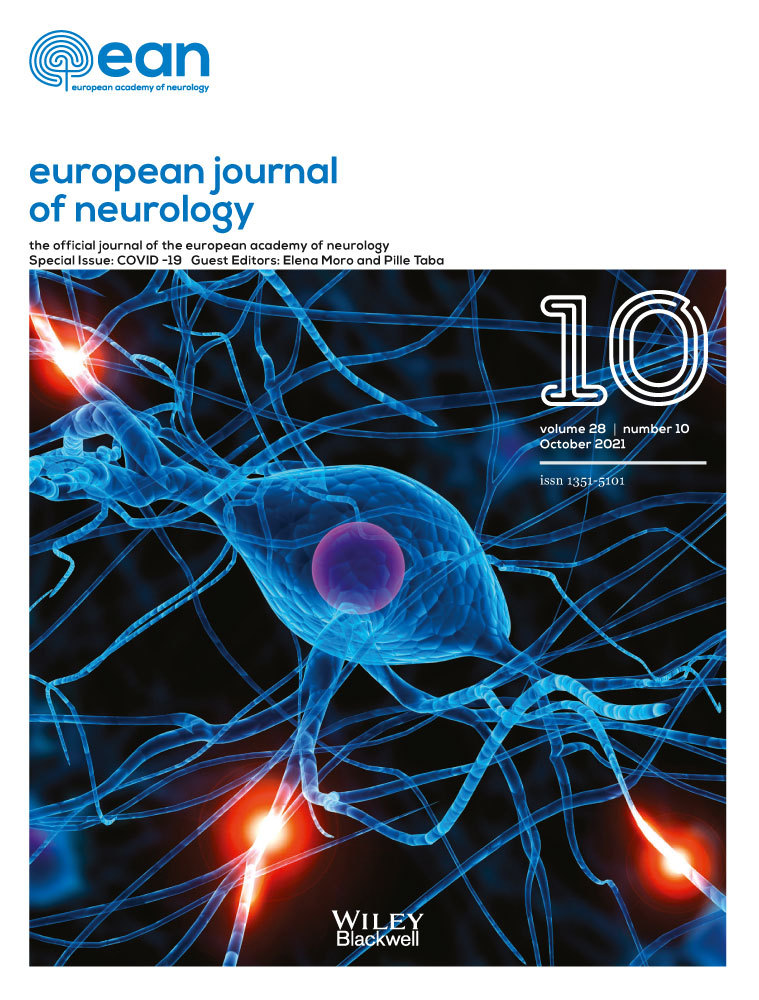Acute cerebellar ataxia and myoclonus with or without opsoclonus: a para-infectious syndrome associated with COVID-19
Cendrine Foucard and Aurore San-Galli contributed equally to the work.
Abstract
Background and purpose
Patients with COVID-19 can have central or peripheral neurological manifestations.
Methods
The cases of two patients with acute cerebellar ataxia and myoclonus associated with COVID-19 are reported (with Video S1) and five previously reported patients are discussed.
Results
Acute cerebellar ataxia and myoclonus started between 10 days and 6 weeks after the first manifestations of COVID-19. Opsoclonus or ocular flutter was present in four patients. Patients were treated with intravenous immunoglobulins and/or steroids except for one patient, resulting in a striking improvement within a week.
Conclusion
Acute cerebellar ataxia and myoclonus with or without opsoclonus belongs to the wide spectrum of neurological manifestations associated with COVID-19. It is important to recognize this possible manifestation since early treatment allows for rapid recovery.
CONFLICT OF INTEREST
The authors have no conflicts of interest in connection with this article.
Open Research
DATA AVAILABILITY STATEMENT
All the data are available in the Department of Neurology at the Pitié-Salpêtrière hospital.




